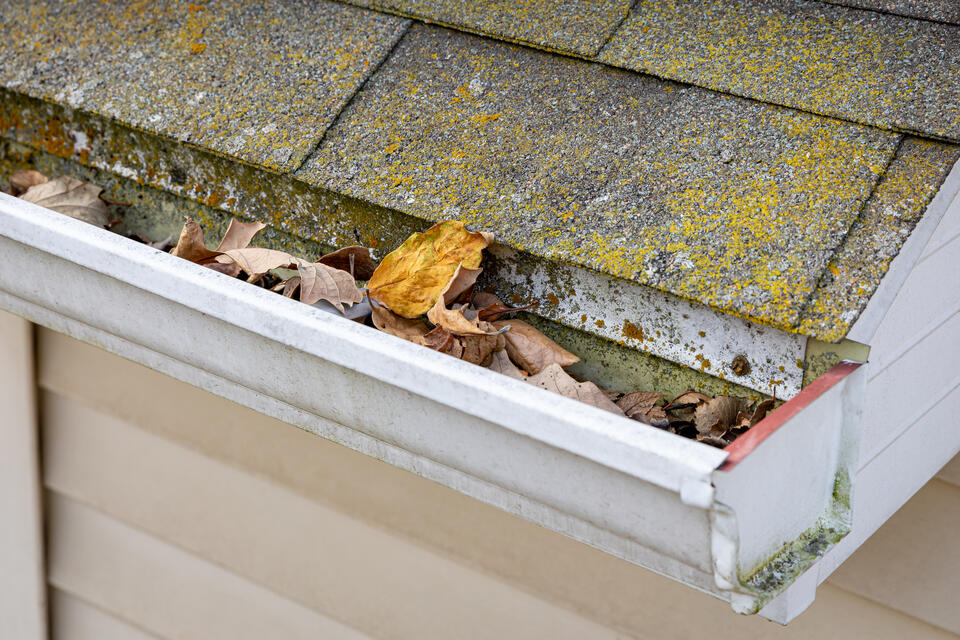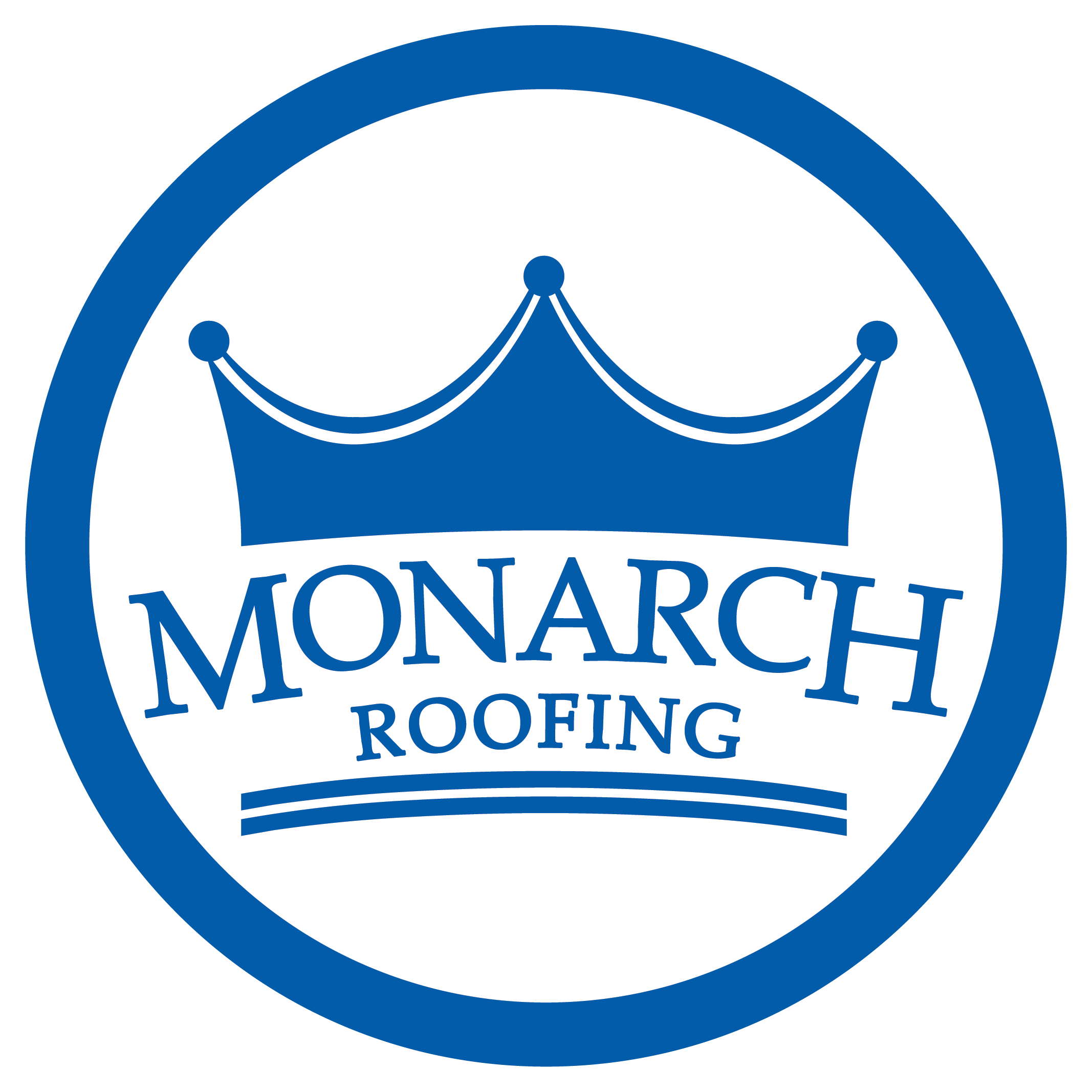Roof mold is one of those homeowner challenges that can feel both annoying and overwhelming. Those dark streaks and patches on your roof not only tarnish its appearance but can lead to significant roofing issues over time. Thankfully, understanding the causes and knowing how to prevent mold growth can save your roof and your wallet. This guide will walk you through everything you need to know, including:
- What causes mold on roof shingles
- How mold impacts your roof and home
- Signs to look out for
- Preventative measures to protect your roof from mold
- Best solutions for removing and managing mold
🦠 What Causes Mold on Roof Shingles?

The leading cause of mold on roof shingles is trapped moisture. When shingles retain moisture—whether from rain, humidity, or poor drainage—it creates the ideal environment for mold to thrive. Mold can not only damage the appearance of your roof, but it can also compromise the integrity of your shingles, leading to costly repairs if not addressed quickly. Let’s take a closer look at some specific causes:
Lack of Sunlight: Roofs shaded by trees, nearby buildings, or other structures tend to stay damp for longer periods after rain. Without adequate sunlight to dry out moisture, these shaded areas create a prime breeding ground for mold, algae, and moss. Over time, this can lead to uneven damage and discoloration on your roof.
Algae Growth: Mold often begins with algae, particularly in warm, humid climates. Algae spores are carried by wind and can settle on your roof, where they grow and spread rapidly in the presence of moisture. Once algae take hold, they can create dark streaks on your roof, which can then attract mold growth. Certain shingle materials are more prone to algae issues, so regular cleaning and maintenance are key.
Poor Ventilation: If your attic isn’t properly ventilated, excessive heat and humidity can build up, creating a perfect environment for mold to form on the shingles above. This trapped heat can also accelerate the wear and tear of your roofing materials, compounding the problem over time. Proper attic ventilation helps balance temperature and moisture levels, reducing the risk of mold development.
Clogged Gutters: When gutters become clogged with leaves, debris, or dirt, they can overflow during heavy rains. This overflow allows water to seep beneath your shingles, encouraging mold, mildew, and even structural rot. Regularly cleaning and maintaining your gutters is essential to keeping water flowing away from your roof.
Organic Debris: Fallen leaves, twigs, and branches left on your roof can trap moisture against the shingles, creating the ideal conditions for mold growth. If this debris is not removed, it can also decompose and contribute to the spread of fungal spores, worsening the situation.
Each of these factors contributes to prolonged moisture exposure on your roof, and if left unchecked, mold can quickly escalate the problem. Mold not only affects the appearance of your roof but can also damage the underlying structure, resulting in leaks, wood rot, and expensive repairs. Regular maintenance, cleaning, and proper roof care are essential to preventing mold and protecting the longevity of your roof.
How Mold Affects Your Roof and Home
Beyond being an eyesore, mold can have serious consequences for your roof and household. Over time, mold eats away at the surface of roof shingles, weakening their structural integrity and leading to shingle damage. This deterioration can also result in cracks and gaps, creating opportunities for water to seep into your home and cause leaks.
A roof affected by mold will have a significantly decreased lifespan compared to one that is properly maintained. Additionally, mold spores can enter your home through air vents, posing potential health risks such as respiratory issues for sensitive family members. Taking mold seriously is essential to avoid costly repairs and protect the health of your household.
Signs of Mold on Your Roof
Spotting mold early can make all the difference in protecting your roof. Keep an eye out for:
- Dark stains or streaks running down your shingles
- Moss or algae patches often seen in green or black
- Discoloration of shingles, particularly on shaded areas of your roof
- A musty smell in your attic or upstairs rooms
Identifying these warning signs early will save you both money and stress.
🛑 7 Preventative Measures to Protect Your Roof From Mold

An ounce of prevention is worth a pound of cure. Take these steps to stop mold before it starts:
1. Trim Overhanging Branches
Trees with overhanging branches can block sunlight from reaching your roof, creating the perfect damp environment for mold to grow. Trimming these branches not only allows sunlight to dry your roof faster after rain but also prevents leaves, twigs, and other debris from falling onto your roof and clogging gutters. Additionally, it reduces the risk of branches damaging shingles during a storm, which could create more areas for moisture to seep in.
2. Clean Gutters Regularly
Clogged gutters are a common culprit for roof mold and water damage. When water cannot flow freely through your gutters, it pools on your roof or around the foundation of your home, creating a breeding ground for mold and mildew. Cleaning your gutters at least twice a year—more often if you have trees nearby—ensures water is properly redirected away from your roof. Installing gutter guards can also help reduce debris buildup and simplify maintenance.
3. Install Proper Roof Ventilation
Without adequate ventilation, warm air from your attic can get trapped, creating heat and humidity that promotes mold growth. Proper roof ventilation allows air to circulate, keeping your attic cooler and reducing moisture levels. This is especially important in areas with high humidity or extreme seasonal temperature changes. Consider consulting a roofing professional to ensure your home has the right type and amount of vents to maintain a healthy airflow.
4. Use Algae-Resistant Shingles
Modern roofing technology has made it easier to combat mold and algae growth. Algae-resistant shingles are made with copper or zinc granules that prevent the buildup of mold, moss, and algae on your roof. Investing in these shingles can be especially beneficial in regions with heavy rainfall or high humidity. While they may cost slightly more upfront, the long-term benefits of a cleaner, low-maintenance roof make them a worthwhile upgrade when replacing or repairing your roof.
5. Apply Mold-Resistant Coating
A mold-resistant coating acts as an extra layer of defense against moisture and mold. These water-repellent coatings not only protect your roof from mold but also prevent the growth of moss and mildew. Applying this coating is a cost-effective way to extend your roof’s lifespan and minimize maintenance efforts. Make sure to use a high-quality product and reapply as recommended to maintain its effectiveness over time.
6. Schedule Annual Roof Inspections
A professional roof inspection is one of the best ways to catch mold and algae issues before they escalate. Trained inspectors can identify early signs of damage, like small leaks or discolored shingles, that could lead to mold growth if left unaddressed. They can also evaluate your roof’s overall condition and recommend preventative measures specific to your home’s location and climate. Scheduling an inspection at least once a year, or after severe weather events, can save you money and headaches in the long run.
7. Keep Roof Debris-Free
Leaves, branches, and other debris can trap moisture on your roof, creating the ideal conditions for mold to thrive. Regularly clearing off this debris not only prevents mold but also reduces the risk of clogged gutters and roof damage. Use a soft broom or leaf blower to remove debris safely—avoid harsh tools that could damage shingles. If your roof is hard to access, consider hiring a professional cleaning service to ensure the job is done thoroughly and safely.
🧼 Best Solutions for Removing Mold

Already dealing with mold on your shingles? Here are safe, effective methods to clean it up:
Use a DIY Cleaning Solution
A DIY cleaning solution is a simple, cost-effective way to remove mold from your roof. Mix one gallon of water with one cup of bleach and one tablespoon of dish soap to create a powerful cleaning solution. Carefully apply it using a spray bottle, focusing on the affected areas. Allow it to sit for 10-15 minutes to break down the mold before rinsing thoroughly with a garden hose. Be sure to avoid high-pressure washers, as they can damage shingles. Safety is critical during this process—always wear protective goggles, gloves, and a mask to avoid inhaling fumes or coming into contact with harmful mold spores. Additionally, ensure the area around your home is protected, as bleach can harm plants or grass.
Hire a Professional Roof Cleaner
When mold covers a large area or the roof is difficult to access, it’s best to leave the job to a professional roof cleaner. Professionals use specialized tools and eco-friendly cleaning solutions designed to eliminate mold without damaging your shingles or roof materials. They also have the expertise to assess the extent of the damage and recommend preventive measures for the future. Hiring a professional can save time and effort while ensuring the job is done safely and effectively. Look for licensed and insured cleaners with experience in handling roofs to guarantee high-quality results.
Install Zinc or Copper Strips
After removing mold, take proactive steps to prevent it from returning. Installing zinc or copper strips near the roof’s ridge is an effective long-term solution. As rainwater flows over these strips, small amounts of the metal are released, creating an environment that inhibits mold and algae growth. This preventive measure can keep your roof mold-free for years with minimal maintenance. Make sure to choose strips that are compatible with your roofing material and install them securely. For added protection, inspect the strips periodically to ensure they remain intact and functional.
🙌 Protect Your Home with Trusted Local Experts
Mold on roof shingles is a common issue caused by moisture, shade, and organic debris, but it doesn’t have to jeopardize the integrity of your home. At Monarch Roofing, we combine years of experience with top-notch techniques to ensure your roof remains clean, durable, and mold-free. Our dedicated team understands the unique roofing challenges homeowners face and provides tailored solutions you can rely on. Don’t wait until small problems become costly repairs—contact Monarch Roofing today for a free inspection and expert advice. Together, we’ll protect your home and ensure your roof stands strong for years to come!





